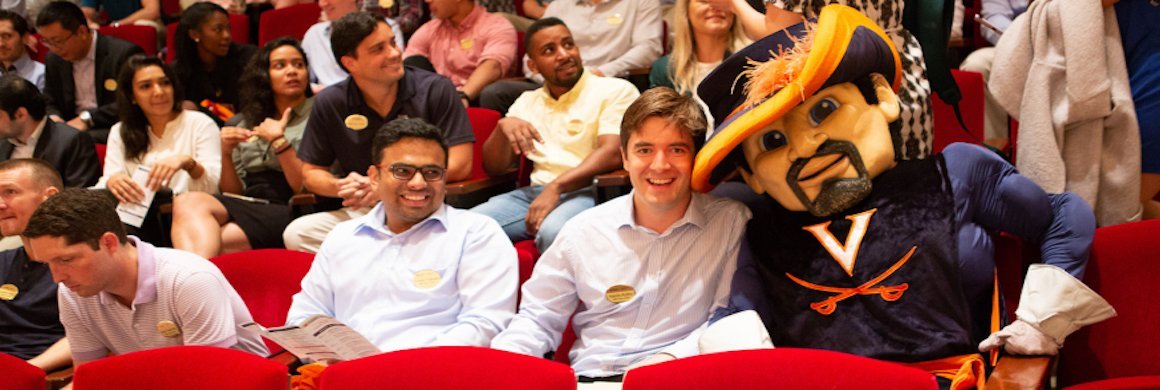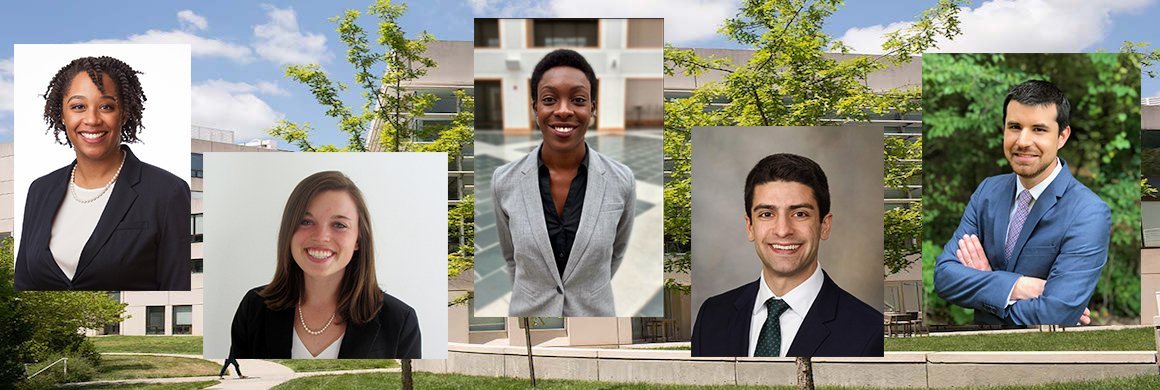
Applications to Harvard Business School dropped 4.5% last year but the decline had no impact whatsoever on any of the key numbers in the class profile for its latest incoming crop of MBA students. The school’s admit rate of 11% remained unchanged as did the school’s median 730 GMAT score and undergraduate GPA of 3.71.
HBS released the new Class of 2020 profile today (Sept. 5), the day of its round one deadline for next fall’s class when Harvard expects a huge spike in new candidates. This is the first year that HBS has eliminated its round three deadline which suggests a much larger round two with a Jan. 4 deadline than would otherwise have occurred.
The school said it received 9,886 applications fo the class, down from 10,351 a year earlier. Last year, HBS apps rose 6% to top the 10,000-mark for the first time since 2002 when just 31 more people applied to the MBA program. The vast majority of highly ranked MBA programs in the U.S. have been reporting application declines this year (see MBA Apps Take A Shocking Plunge). HBS’ decline was on the low side, considering that many schools have reported double-digit drops.
‘IT’S HARD TO CAPTURE A CLASS IN THESE STATISTICS’

Chad Losee, managing director of MBA admissions and financial aid at Harvard Business School
“We are still slightly up from two years ago because last year we saw a big increase,” says Chad Losee, managing director of MBA admissions and financial aid. ”But we’re not trying to get more applications. We are trying to reach more solid candidates.”
While the publication of the school’s class profile gives would-be applicants the latest glimpse at what type of candidates get into an MBA program, Losee cautions reading too much into the metrics. “It’s so hard to capture a class in these statistics,” he tells Poets&Quants in an interview. “We don’t think about it in terms of statistics. We think about each person we are admitting and the voice that person brings to the class.”
In fact, the sparse statistics in a class profile could disguise more significant changes in the makeup of Harvard’s incoming class. “One thing we have focused on over the last 18 months is really making sure how socio-economically diversed HBS is,” explains Losee. “We launched the Forward Fellowship and our need based fellowships look at individual student income and assets (see HBS Adds Scholarship Support For Low Income Students). What we found is that there were students who came from low income backgrounds who were still supporting their families. We wanted to find a way to support them and students who get the Forward Fellowship receive an extra $30,000 in addition to need-based aid. It’s been meaningful to both students and prospective students.”
SOME 930 STUDENTS MAKE UP HARVARD’S MBA CLASS OF 2020
One stat you won’t find in the class profile, for example, is the number of first-generation college students. This year, however, 79 members, or 8.5%, of the HBS Class of 2020 are “first in family,” meaning that neither parent graduated from college.
All told, 930 students started Harvard’s MBA program last Thursday, two more than last year. Yield—the percentage of admitted students who enroll in the class—slipped to 90% from 91%. That number, the highest reported yield for any prestige business school in the world, has largely been in a tight range from 89% to 91% for many years.
Unlike several other peer schools, HBS did not experience a significant fall in international applicants. In fact, the school enrolled a slightly larger class of international students this year than last, 37% from 69 countries versus 35% from 70 nations for the Class of 2019.
GRE SCORES INCREASING IN THE APPLICANT POOL AND THE ADMITTED CLASS
Losee says the 4.5% decline came from both domestic and internationals. “It’s pretty hard to tease out the effects of a really strong economy and other effects happening in the world,” he added. “For us, the trend of being a little flat this year was true for both domestic and international. They were both up last year and they were both down last year.”
The percentage of women in the Class of 2020 slipped to 41% from 42% last year. “We have 383 women enrolled this year and it’s a reallly strong group with lots of different backgrounds from all kinds of industries and from all over the world,” says Losee.
A higher percentage of enrolled students won acceptance with GRE scores this year, 15% versus 12% last year. That is a 25% year-over-year increase and a new record of GRE students at HBS. Losee says more applicants are submitting GRE scores and more of them are being admitted. He believes the school’s consistent message that it does not prefer one test over another is finally getting traction. “It continues to increase,” he says. “I think people are starting to believe we really are agnostic about the two tests. We want to see how well they are prepared for the classroom and which test they take doesn’t matter.”
Harvard said that the median quant score for the GRE was 163, with a range of 151 to 170, while the median verbal score was 165, with a range of 147 to 170.
GMAT RANGE FOR CLASS WENT FROM A LOW OF 610 TO A PERFECT SCORE OF 800
This year’s GMAT range for the Class of 2020 is 610 to a perfect score of 800, compared to last year’s range of 580 to 790. The median quant score was 49, with a range of 35 to 51, while the median verbal score was 42, with a range of 28 to 51.
Changes in the educational backgrounds of Harvard’s newest students also were largely inconsequential. The largest single chunk of MBA candidates majored in economics or business: 46%, up a single percent from 45% last year. STEM (Science, Technology, Engineering and Math) majors make up 37% of the Class of 2020, up a percent from 36% a year ago. Students who majored in the humanities and social sciences total 17%, down from 19% last year.
Harvard also disclosed that its newest class has undergraduate degrees from 134 domestic universities and 154 non-U.S. universities, though the school relies heavily on undisclosed feeder schools (see Top Feeder Colleges To Harvard Business School).
SOME 27% OF THE CLASS OF 2020 COMES TO HARVARD WITH A WORK BACKGROUND IN FINANCE
The pre-MBA industry backgrounds of this year’s students also saw small year-over-year changes. The largest industry represented in the class remains finance, with 27% of the students, roughly the same as last year. Some 16% of the class had jobs in venture capital and private equity, up from 15% a year ago, and 11% from financial services.
Students from consulting represent 16% of the new class, exactly the same as last year, while those from high tech and communications also account for 16% of the students, up a single percent from 15% a year earlier. “In tech and communications,” says Losee, “we have seen a slow and steady increase in applicants and the number of people in the class from 13% to 16% over the last five years. That mirrors what people are choosing to do out of undergrad as well. We have also seen new interest in our joint-degree program and our increasing collaboration with our engineering school.”
In early August, the school enrolled its inaugural class of 29 students in the new joint degree program HBS now has with the Paulson School of Engineering and Applied Sciences. The program targets applicants with undergraduate degrees in engineering, computer science or a related field and a work background developing tech-intensive products are eligible for the MBA/MS in engineering sciences program. Losee noted that the first class drew students with backgrounds in life sciences, aerospace, e-commerce, software, hardware, robotics, medical devices, fin tech, cybersecurity, and the military.

Harvard remains the gold standard for business schools in many ways, not least of which is the huge number of living alumni, more than 84,000, and alumni clubs around the globe:
LOSEE UNSURE OF HOW THE LACK OF A ROUND THREE WILL IMPACT HBS APPLICATIONS THIS YEAR
Government, education and nonprofit students account for 8% of the Class of 2020, versus 7% last year; healthcare and biotech students represent 7% of the class, same as last year; 6% come from the consumer products industry, while 6% had been in the energy and extractive minerals field, both the exact percentage of the previous class.
MBA students from the military account for 5% of this year’s entering class, also the same as last year, and students from the industrial and heavy manufacturing sector represent 4% of the Class of 2020, down a percent from 5%. Students in the “other services” category represent 6% of the class, down from 7% last year.
Losee wasn’t sure how the change to two rounds from three will impact this year’s application volume (see HBS Kills An MBA Admissions Round). “When we made the decision to cut round three, we were trying to think of what was best for the applicant and not the application numbers,” he says. “It could be the people who would have applied in a round three might show up next fall in round one.”














